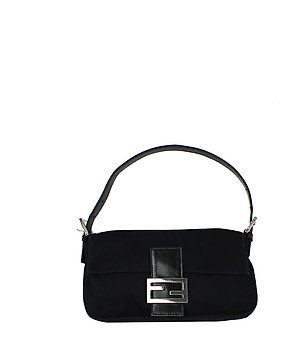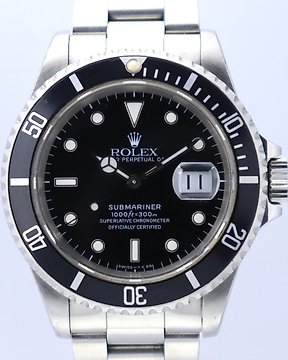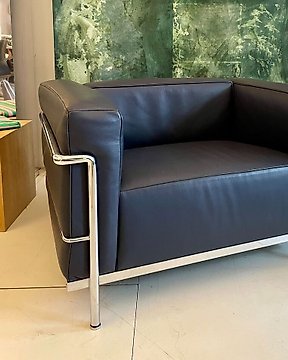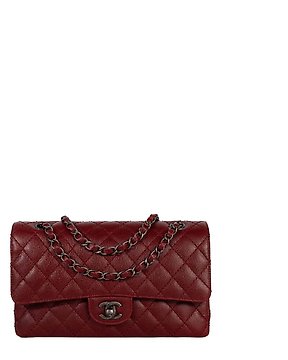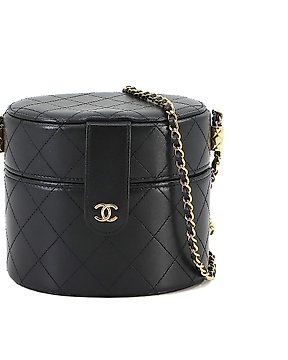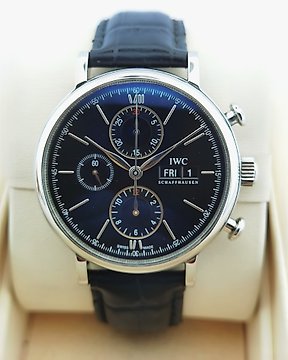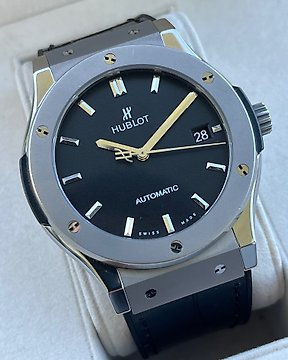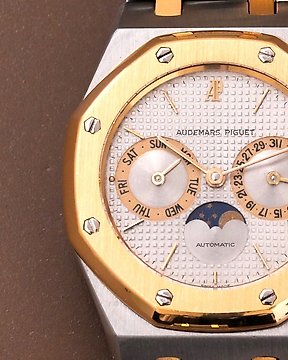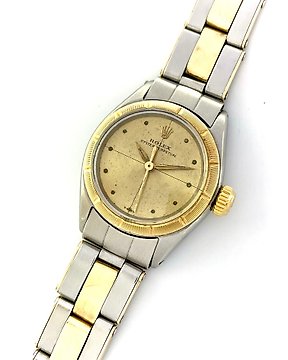Top
查看翻译玛雅,古典时期,公元 600 - 900 年。 Terracotta 三脚缸容器。公元 600 - 900 年。 16.5 厘米。 H. 拥有西班牙进口许可证。
编号 85409941
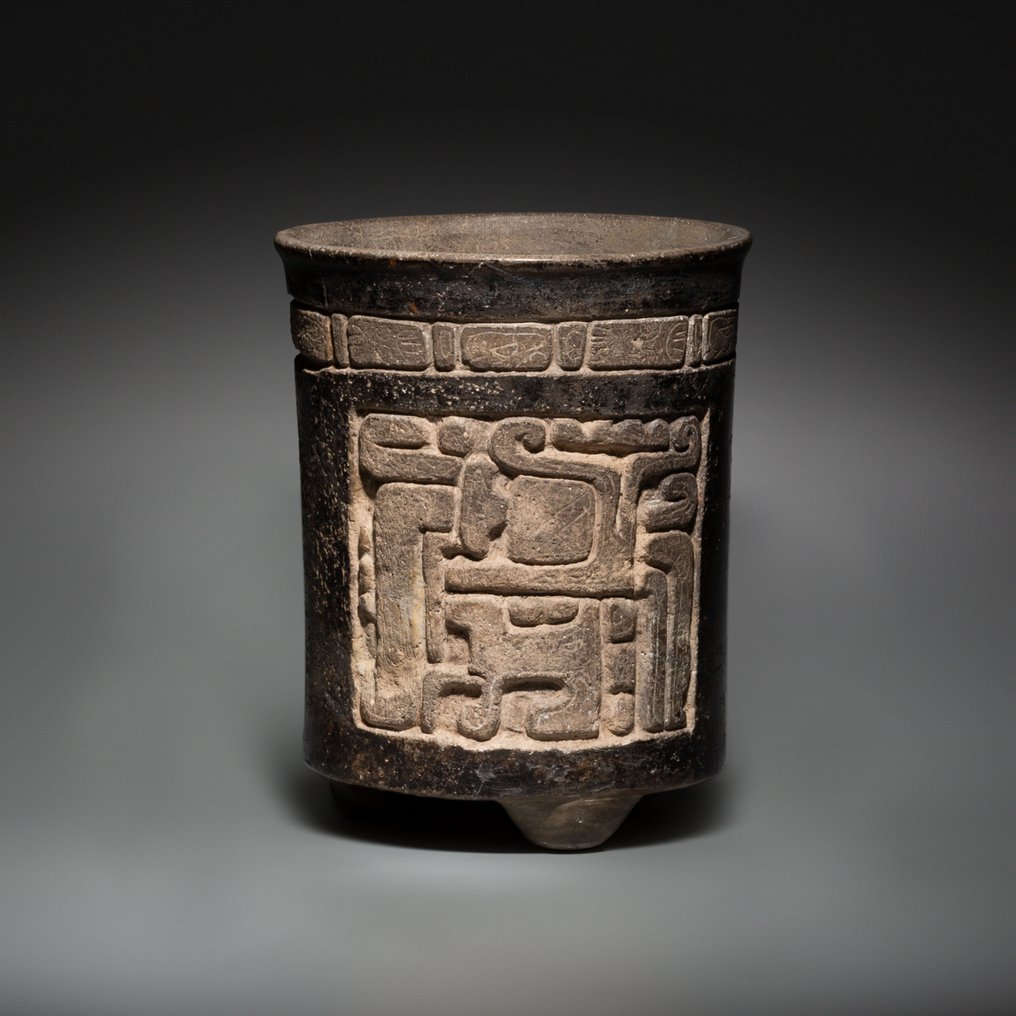
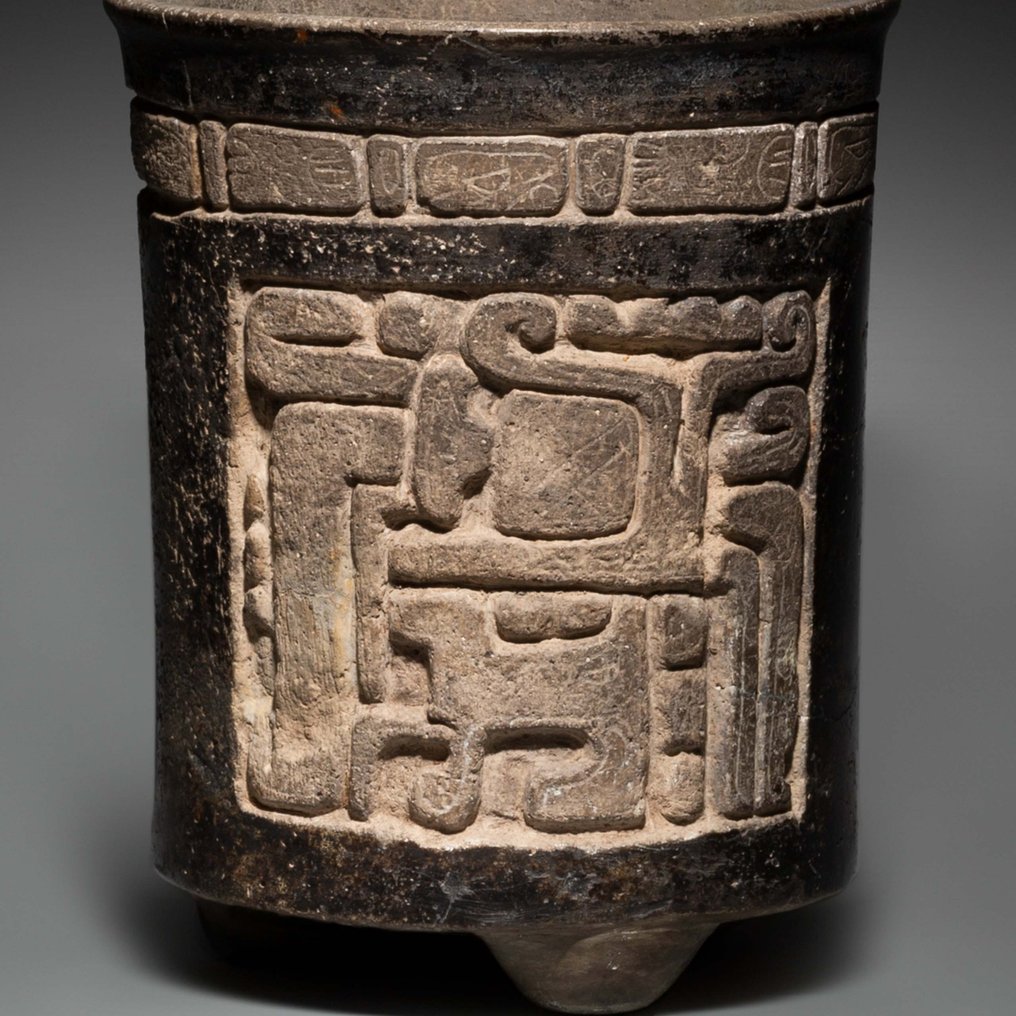

TRIPOD CYLINDER
Mayan · Classic Period, 600 - 900 AD.
Material: Terracotta, Pottery
Size: Height 16.5 cm and diameter 13 cm
Provenance
- Gallery Gerdes Prakolumbische Kunst, Munich, Germany, 1970 – 1980.
- Private collection, Dr. Ludwig Jansen (1919 - 2020), Germany.
Condition
Good condition, presents three vertical break lines and one longitudinal at the bottom, professionally restored.
Cylindrical glass with a slightly open mouth, with tripod support, made of very thin-walled ceramic, with a burnished black surface on the outside and relief motifs with an excavated bottom, highlighted in the natural color of the clay. These designs are organized in two boxes, one for each front of the glass, and also form a continuous band under the mouth. This upper band shows simple motifs, alternating vertical and horizontal shapes. The boxes, on the other hand, house a complex design, identical on both sides, which includes the central figure of a snake.
Two pieces are preserved in Los Angeles that present interesting parallels with the glass under study. The first of them shows a similar structure and ornamental and chromatic scheme, although the band under the mouth houses glyphs (fig. 1). The second, a cylindrical tripod vase decorated with slips, includes a very similar representation of a snake, although developed horizontally instead of housed in a box (fig. 2).
During the Classic period, the Mayans created three deities represented by that animal: the Vision Serpent, the Warrior Serpent, and the Water Lily Serpent .
The first was invoked during rituals to allow the ancestors to reach Xibalbá and for the celestial deities to come down to give advice to the priests. Such ceremonies included piercings of the skin, usually in the ears, lips, tongue or genitals, which were done with thorns or obsidian blades. The blood fell on pieces of bark that were later burned. From that thick smoke emerged the image of a snake, which they called "Vision"—the loss of blood, in addition, induced a kind of trance. From that account, the Mayans could talk to their ancestors.
The Guerrera and Nenúfar snakes are believed to have emerged from contact with the Teotihuacans . The Warrior was conceived as the protector of those who went to battle. The Water Lily Snake is associated with calm waters, with snakes that swim at the bottom and with water lilies that float on the surface . Little is known about the symbolism that these two elements have together, except that this plant represents the division between the world of the living and the world of the dead. The fact that the Mayans depicted the snake next to the water lily means that they believed it to be very powerful.
In the Mayan world there are hundreds of figures alluding to snakes. The glyphs were even emblems of important sites - such as in the Kan Kingdom, the Kingdom of the Serpent in the area of El Mirador, Petén - since it represents the god Bolon. Dzacab . It also appears in the mannequin scepters, elements of power that are in the hands of the rulers of many stelae and monuments of the Late Classic.
The snake figures were also captured in ceramic vessels, reliefs and sculptures carved in stone and modeled in stucco on the buildings. The last representations of this animal were made until the arrival of the Spanish to American lands.
The Mayan vessels or cylinders constitute an inexhaustible source of information about their culture. They are a privileged support where they knew how to express their imagination with great mastery: they inform about the history and life of the elites, but, above all, they are an important element to understand mythology; both images of gods and myths, frequently accompanied by glyphs that indicate the name of the person or god, which define what activity they are representing. Sometimes other types of inscriptions appear on Mayan vessels, the so-called dedications, which name who paid for the creation of the vessel, for what purpose and, in some cases, the name of the author. In this way it is known which shape was used to contain which liquids; The concave and cylindrical containers were intended to store drinks inside to be consumed during the holidays of the privileged classes—especially chocolate. These highly valuable containers were exchanged among themselves for diners or gift items.
Even though they were of funerary origin, the vast majority were made to be used in life, although it was common for the same ones, or similar ones, to be taken to the grave to be included in their trousseau. They were always pieces made by modeling, since this culture did not know the lathe. The colors used were always engobes, based on clay, and the vessels were fired at a low temperature, approximately 800º C.
In the period of the Ancient Classic, artists worked more easily by excising and incising the still wet clay, so that after firing a type of ceramic comparable to a decoration technically similar to the bas-relief engravings of the monuments. At the time they were polychromed, they usually did it in the same way as they painted the walls, that is, cold on a lime plaster or stucco, covering the piece according to a procedure that does not seem to be original from the Mayan area but rather of Teotihuacan. In the Recent Classic period, the decoration is painted by means of engobes or slips applied before firing. The range of colors of these vessels is very vivid and colorful, while some others, the so-called Codex-type vessels, show simple black lines on a white background.
Notes:
- The piece includes authenticity certificate.
- The piece includes Spanish Export License.
- The seller guarantees that he acquired this piece according to all national and international laws related to the ownership of cultural property. Provenance statement seen by Catawiki.
卖家故事
TRIPOD CYLINDER
Mayan · Classic Period, 600 - 900 AD.
Material: Terracotta, Pottery
Size: Height 16.5 cm and diameter 13 cm
Provenance
- Gallery Gerdes Prakolumbische Kunst, Munich, Germany, 1970 – 1980.
- Private collection, Dr. Ludwig Jansen (1919 - 2020), Germany.
Condition
Good condition, presents three vertical break lines and one longitudinal at the bottom, professionally restored.
Cylindrical glass with a slightly open mouth, with tripod support, made of very thin-walled ceramic, with a burnished black surface on the outside and relief motifs with an excavated bottom, highlighted in the natural color of the clay. These designs are organized in two boxes, one for each front of the glass, and also form a continuous band under the mouth. This upper band shows simple motifs, alternating vertical and horizontal shapes. The boxes, on the other hand, house a complex design, identical on both sides, which includes the central figure of a snake.
Two pieces are preserved in Los Angeles that present interesting parallels with the glass under study. The first of them shows a similar structure and ornamental and chromatic scheme, although the band under the mouth houses glyphs (fig. 1). The second, a cylindrical tripod vase decorated with slips, includes a very similar representation of a snake, although developed horizontally instead of housed in a box (fig. 2).
During the Classic period, the Mayans created three deities represented by that animal: the Vision Serpent, the Warrior Serpent, and the Water Lily Serpent .
The first was invoked during rituals to allow the ancestors to reach Xibalbá and for the celestial deities to come down to give advice to the priests. Such ceremonies included piercings of the skin, usually in the ears, lips, tongue or genitals, which were done with thorns or obsidian blades. The blood fell on pieces of bark that were later burned. From that thick smoke emerged the image of a snake, which they called "Vision"—the loss of blood, in addition, induced a kind of trance. From that account, the Mayans could talk to their ancestors.
The Guerrera and Nenúfar snakes are believed to have emerged from contact with the Teotihuacans . The Warrior was conceived as the protector of those who went to battle. The Water Lily Snake is associated with calm waters, with snakes that swim at the bottom and with water lilies that float on the surface . Little is known about the symbolism that these two elements have together, except that this plant represents the division between the world of the living and the world of the dead. The fact that the Mayans depicted the snake next to the water lily means that they believed it to be very powerful.
In the Mayan world there are hundreds of figures alluding to snakes. The glyphs were even emblems of important sites - such as in the Kan Kingdom, the Kingdom of the Serpent in the area of El Mirador, Petén - since it represents the god Bolon. Dzacab . It also appears in the mannequin scepters, elements of power that are in the hands of the rulers of many stelae and monuments of the Late Classic.
The snake figures were also captured in ceramic vessels, reliefs and sculptures carved in stone and modeled in stucco on the buildings. The last representations of this animal were made until the arrival of the Spanish to American lands.
The Mayan vessels or cylinders constitute an inexhaustible source of information about their culture. They are a privileged support where they knew how to express their imagination with great mastery: they inform about the history and life of the elites, but, above all, they are an important element to understand mythology; both images of gods and myths, frequently accompanied by glyphs that indicate the name of the person or god, which define what activity they are representing. Sometimes other types of inscriptions appear on Mayan vessels, the so-called dedications, which name who paid for the creation of the vessel, for what purpose and, in some cases, the name of the author. In this way it is known which shape was used to contain which liquids; The concave and cylindrical containers were intended to store drinks inside to be consumed during the holidays of the privileged classes—especially chocolate. These highly valuable containers were exchanged among themselves for diners or gift items.
Even though they were of funerary origin, the vast majority were made to be used in life, although it was common for the same ones, or similar ones, to be taken to the grave to be included in their trousseau. They were always pieces made by modeling, since this culture did not know the lathe. The colors used were always engobes, based on clay, and the vessels were fired at a low temperature, approximately 800º C.
In the period of the Ancient Classic, artists worked more easily by excising and incising the still wet clay, so that after firing a type of ceramic comparable to a decoration technically similar to the bas-relief engravings of the monuments. At the time they were polychromed, they usually did it in the same way as they painted the walls, that is, cold on a lime plaster or stucco, covering the piece according to a procedure that does not seem to be original from the Mayan area but rather of Teotihuacan. In the Recent Classic period, the decoration is painted by means of engobes or slips applied before firing. The range of colors of these vessels is very vivid and colorful, while some others, the so-called Codex-type vessels, show simple black lines on a white background.
Notes:
- The piece includes authenticity certificate.
- The piece includes Spanish Export License.
- The seller guarantees that he acquired this piece according to all national and international laws related to the ownership of cultural property. Provenance statement seen by Catawiki.
卖家故事
- 755
- 7
- 0
goede foto's, goede omschrijving, goed verpakt en snel verzonden.
查看翻译molto bello tutto ok
查看翻译Pezzo come da descrizione, davvero notevole. Venditore molto consigliato in quanto gentile e disponibile. spedizione molto veloce. Ottimo!
查看翻译Venditore davvero ottimo e gentile. Merce come da descrizione, spedizione veloce. Ottimo l'avere certificato di autenticità.
查看翻译Un 100 como empresa un 100 como envío . Empresa muy especial con mucha exquisitez en todos los productos y en personal . Muchas gracias
查看翻译All well! Thanks.
查看翻译Very nice and fine cut little jewel! Well packed too! Thanks!
查看翻译nice piece and very fast shipping!
查看翻译Es una maravilla de moneda, donde se le nota los pasos de los años y me encanta. Servido muy rápido y bien empaquetado. Con su certificación. Qué más se puede pedir?
查看翻译Snelle en correcte levering, alleen was de verpakking voor het schilderij niet stevig genoeg.
查看翻译Herzlichen Dank!
查看翻译All OK and with very fast shipping.
查看翻译Prachtig schilderij. Zo blij mee. Zeer nette verkoper en zeer snelle levering.
查看翻译perfect ! very fast and high quality delivery !
查看翻译All well! Thanks.
查看翻译Vendeur très professionnel, top +++×
查看翻译Photos trop contrastées pour bien percevoir les défauts, mais ces défauts étaient visibles pour autant. Le "Bon état" est trompeur. Sinon, envoi rapide et correctement emballé. Frais de port exagérés.
查看翻译Great communication, delivery and product. Came with a well made certificate of authenticity and good packaging. Overall very happy with the purchase! Delivery is a bit expensive, but I recommend it
查看翻译Magnifique témoin du passé, envoyé avec tous les justificatifs, impeccable. Encore une fois très satisfait, un grand merci
查看翻译Thank you for the Special offer and the fast shipping of this excellent piece of art!
查看翻译very good description of the object, very good price for this rare item,. Fast sending (has been at my place 2 days after buying!). Definitely would buy again.
查看翻译Sehr schön
查看翻译As described, perfect logistic
查看翻译great seller, everything came as should with certificate of authenticity
查看翻译